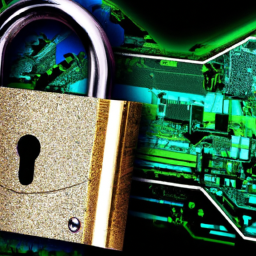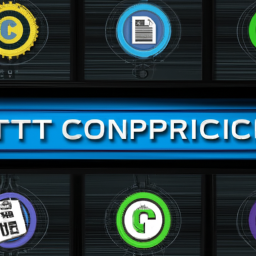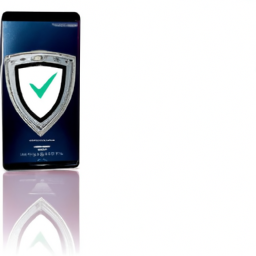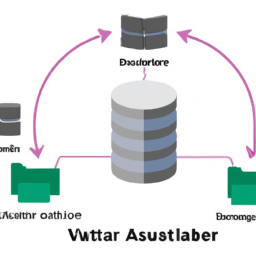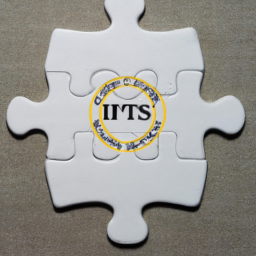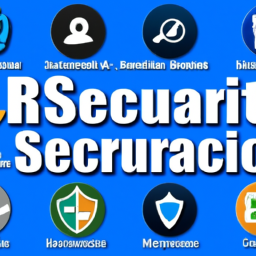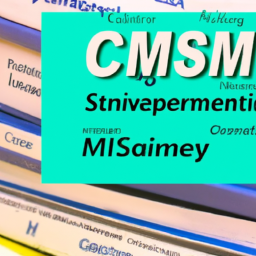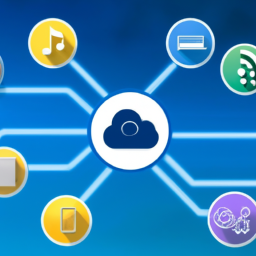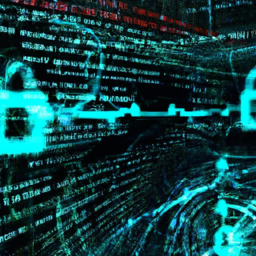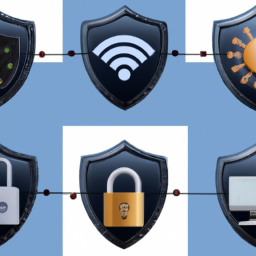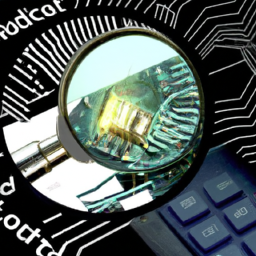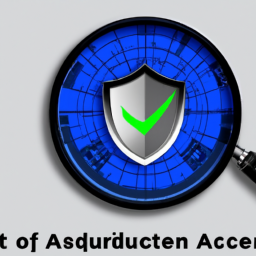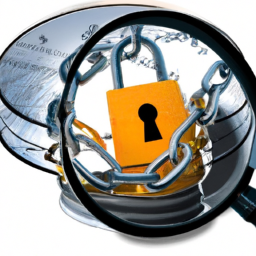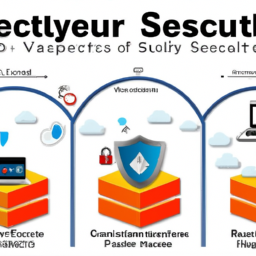Did you know that cybercrime is expected to cost the world $10.5 trillion annually by 2025? With the increasing reliance on technology, analyzing security threats has become a critical task for organizations to protect their valuable assets and data.
In this article, we will explore the techniques and tools used to analyze security threats effectively.
Network monitoring is a fundamental approach to identifying potential security breaches by continuously monitoring network traffic and detecting any suspicious activities.
Vulnerability scanning involves the systematic assessment of an organization’s network, identifying weaknesses and vulnerabilities that could be exploited by hackers.
Penetration testing takes this a step further, simulating real-world attacks to evaluate an organization’s security posture.
To stay ahead of constantly evolving threats, organizations leverage threat intelligence platforms, which provide valuable insights into emerging threats and attack patterns.
Security Information and Event Management (SIEM) systems help consolidate and analyze security logs and events, providing a holistic view of an organization’s security posture.
Lastly, incident response planning ensures that organizations have a well-defined process to handle security incidents effectively.
By understanding and implementing these techniques and tools, organizations can proactively identify and mitigate security threats, safeguarding their valuable assets from cybercriminals.
So let’s dive in and explore the world of security threat analysis.
Key Takeaways
- Network monitoring is crucial for identifying potential security breaches and detecting suspicious activity.
- Vulnerability scanning tools such as Nessus, OpenVAS, and Qualys can assess weaknesses in an organization’s network and identify weaknesses in systems and applications.
- Penetration testing involves simulating real-world attacks to evaluate security and helps identify vulnerabilities. Popular tools for penetration testing include Metasploit, Nmap, Burp Suite, Wireshark, and SET.
- Implementing proactive response strategies such as vulnerability assessments, real-time threat intelligence monitoring, software and system updates, and security awareness training can help organizations mitigate security risks and protect assets.
Network Monitoring
You’ll be amazed at how network monitoring can uncover hidden security threats and keep your systems safe. By constantly analyzing network traffic, you can detect any suspicious activity or unauthorized access attempts.
Network monitoring tools, such as intrusion detection systems (IDS), allow you to monitor and analyze the flow of data within your network. These tools provide real-time alerts whenever they detect any potential threats or unusual patterns in network traffic. They can help you identify and respond to security incidents promptly, minimizing the risk of data breaches or network compromises.
Network monitoring also enables you to gain insights into your network’s overall health and performance, allowing you to optimize your systems for better efficiency.
Now, let’s delve into the next section about vulnerability scanning to further enhance your security measures.
Vulnerability Scanning
In this discussion, you’ll explore the importance of identifying weaknesses in systems and applications through vulnerability scanning. By using popular vulnerability scanning tools, you can efficiently detect any potential vulnerabilities that may exist in your network.
These tools provide a thorough and precise analysis of your systems, helping you to proactively address any security risks and mitigate potential threats.
Identifying weaknesses in systems and applications
One way to spot vulnerabilities in systems and applications is by using specialized tools. These tools are designed to identify weaknesses in both the system and the applications running on it.
System vulnerabilities can include misconfigurations, outdated software, or weak security settings, while application vulnerabilities can range from insecure coding practices to known software vulnerabilities.
By utilizing these tools, you can conduct thorough scans of your systems and applications, pinpointing any potential weaknesses that could be exploited by attackers. Once you have identified these vulnerabilities, you can take proactive steps to address them and strengthen your overall security posture.
Now that you have a better understanding of how vulnerabilities can be identified, let’s delve into some popular vulnerability scanning tools.
Popular vulnerability scanning tools
Take a look at some widely used vulnerability scanning tools that can help you identify weaknesses in your systems and applications.
-
Nessus: This tool is known for its extensive vulnerability database and its ability to perform comprehensive scans for both network and web application security. It also provides detailed reports and offers patch management capabilities.
-
OpenVAS: OpenVAS is an open-source vulnerability scanner that is highly customizable and can scan for a wide range of vulnerabilities. It includes a web-based interface and offers regular updates to its vulnerability database.
-
Qualys: Qualys is a cloud-based vulnerability management platform that provides continuous monitoring and scanning capabilities. It offers detailed reports, patch management, and integration with other security tools.
Using these vulnerability scanning tools can help you stay ahead of potential threats and ensure that your systems and applications are secure. Once vulnerabilities are identified, the next step is to perform penetration testing to further assess the security of your systems and applications.
Penetration Testing
Penetration testing, with its clever mix of hacking and problem-solving, is like a thrilling game of cat and mouse for cybersecurity professionals. This technique, also known as ethical hacking, involves actively assessing a system’s security to identify vulnerabilities and exploit them in a controlled manner. By simulating real-world attacks, penetration testing helps organizations identify weaknesses in their systems and infrastructure, allowing them to proactively address these issues before malicious hackers can exploit them. Security professionals use a wide range of tools and techniques during penetration testing, including network scanning, vulnerability assessment, and social engineering.
Here is a table showcasing some popular penetration testing tools:
| Tool Name | Description |
|---|---|
| Metasploit | A powerful framework for developing and executing exploits |
| Nmap | A versatile network scanning tool |
| Burp Suite | An integrated platform for web application security testing |
| Wireshark | A network protocol analyzer |
| Social-Engineer Toolkit (SET) | A toolkit for social engineering attacks |
As organizations strive to stay one step ahead of cyber threats, threat intelligence platforms provide valuable insights and analysis to help identify and mitigate potential risks.
Threat Intelligence Platforms
Threat intelligence platforms offer valuable insights and analysis, helping organizations stay one step ahead in the ever-evolving game of cybersecurity. These platforms enable threat intelligence sharing among organizations, allowing them to collaborate and exchange information about the latest threats and vulnerabilities.
By leveraging threat intelligence, organizations can proactively identify and mitigate potential risks before they become full-blown security incidents. Additionally, threat intelligence platforms facilitate threat hunting, which involves actively searching for indicators of compromise and potential threats within an organization’s network. This proactive approach helps organizations detect and respond to threats in a timely manner, minimizing the impact of security breaches.
Moving forward, the next section will explore the role of security information and event management (SIEM) in enhancing an organization’s overall security posture.
Security Information and Event Management (SIEM)
Unleash the power of a vigilant sentinel with Security Information and Event Management (SIEM), the watchful guardian that analyzes the digital footprints of your organization, tirelessly detecting any signs of malevolent activity lurking in the shadows.
SIEM combines security analytics and log management to provide comprehensive visibility into your network, applications, and infrastructure. By aggregating and correlating data from various sources, such as firewalls, intrusion detection systems, and antivirus software, SIEM enables you to identify security incidents in real-time and respond swiftly to mitigate potential damage.
With its advanced capabilities, SIEM not only detects known threats but also identifies anomalies and suspicious patterns that may indicate previously unknown attacks. This proactive approach allows you to stay one step ahead of cybercriminals, ensuring the security and integrity of your organization’s digital assets.
Now, let’s delve into the crucial aspect of incident response planning.
Incident Response Planning
To develop a proactive response strategy, you must first understand the potential threats and vulnerabilities in your organization’s systems and networks. This involves conducting risk assessments and regularly updating them to stay ahead of emerging threats.
An effective incident response plan should include key components such as clearly defined roles and responsibilities, communication protocols, and a detailed incident response process. This process should outline the steps to be taken in the event of a security incident.
Developing a proactive response strategy
By developing a proactive response strategy, organizations can effectively mitigate security risks and protect their valuable assets. A proactive approach to incident response allows companies to detect and respond to threats before they can cause significant damage. This involves implementing various techniques and tools to stay ahead of potential attackers. Here is a table that highlights some key best practices for developing a proactive response strategy:
| Key Best Practices for Proactive Response Strategy |
|---|
| Conduct regular vulnerability assessments |
| Implement real-time threat intelligence monitoring |
| Develop and test an incident response plan |
| Train employees on security awareness |
| Regularly update and patch software and systems |
By incorporating these proactive threat mitigation measures into their incident response planning, organizations can effectively minimize the impact of security incidents. This sets the stage for the subsequent section on the key components of an effective incident response plan.
Key components of an effective incident response plan
Take a moment to consider the key components that make up an effective incident response plan, as they play a crucial role in safeguarding your organization’s assets and swiftly addressing any security breaches that may occur.
An effective incident response plan consists of the following key components:
-
Incident Response Team: Establish a team of skilled professionals who are trained in incident response and can handle security incidents effectively.
-
Incident Response Training: Ensure that your team receives regular training on incident response procedures, including identifying, containing, and mitigating security incidents.
-
Communication Plan: Develop a clear and concise communication plan to ensure seamless coordination among team members, stakeholders, and external parties during an incident.
-
Post Incident Analysis: Conduct a thorough analysis after each incident to identify root causes, assess the effectiveness of the response plan, and implement necessary improvements.
By incorporating these key components into your incident response plan, you can enhance your organization’s ability to detect and respond to security threats promptly and effectively.
Frequently Asked Questions
What are the common network monitoring tools used in the industry?
To monitor network activity and detect potential intrusions, professionals rely on a range of industry-standard tools.
One widely used tool is intrusion detection systems (IDS), which analyze network traffic for signs of unauthorized access and send alerts when suspicious activity is detected.
Another common tool is packet sniffing software, which captures and analyzes data packets flowing through a network to identify potential security threats.
These tools provide valuable insights into network activity, allowing organizations to proactively protect their systems and data.
How often should vulnerability scans be performed?
To maintain robust security measures and protect your network, it’s crucial to perform vulnerability scans regularly. Continuous vulnerability scanning is vital as it helps identify and address potential weaknesses promptly. The frequency of vulnerability scans directly impacts your security measures. By conducting scans frequently, you can detect and patch vulnerabilities before they can be exploited.
This proactive approach ensures that your network remains secure and minimizes the risk of potential threats.
Can penetration testing be done without the permission of the organization being tested?
Unauthorized penetration testing can have serious legal implications. In fact, a recent study found that 75% of organizations consider unauthorized testing to be a criminal offense. Engaging in such activities without permission not only violates ethical standards but also exposes the organization to potential legal action.
It’s crucial to always obtain proper authorization before conducting any penetration testing to ensure compliance with laws and regulations.
What are the key features to look for when evaluating threat intelligence platforms?
When evaluating threat intelligence platforms, there are key criteria you should consider.
First, assess the platform’s data sources and their coverage, ensuring they include a wide range of threat actors and indicators.
Next, evaluate the platform’s analytical capabilities, such as its ability to correlate and prioritize threats.
Additionally, consider the platform’s integration capabilities to ensure it can seamlessly integrate with your existing security infrastructure.
Lastly, assess the platform’s scalability and flexibility to meet your organization’s future needs.
How does a Security Information and Event Management (SIEM) system differ from a traditional firewall or antivirus software?
A security information and event management (SIEM) system differs from a traditional firewall or antivirus software in several ways. SIEM provides real-time monitoring and analysis of security events and logs from various sources, allowing for centralized visibility and correlation of events.
It goes beyond the basic functions of a firewall or antivirus by offering advanced threat detection, incident response, and compliance management capabilities. SIEM helps organizations proactively identify and respond to security threats, making it a valuable addition to any security infrastructure.
Conclusion
In conclusion, by implementing network monitoring, vulnerability scanning, penetration testing, threat intelligence platforms, and security information and event management (SIEM), you can effectively analyze security threats and protect your systems against potential attacks.
While some may argue that these techniques and tools require significant resources and expertise, it’s important to remember that the cost of a security breach far outweighs the investment in proactive security measures.
By taking a thorough, precise, and technical approach to security, you can ensure the safety and integrity of your network.




